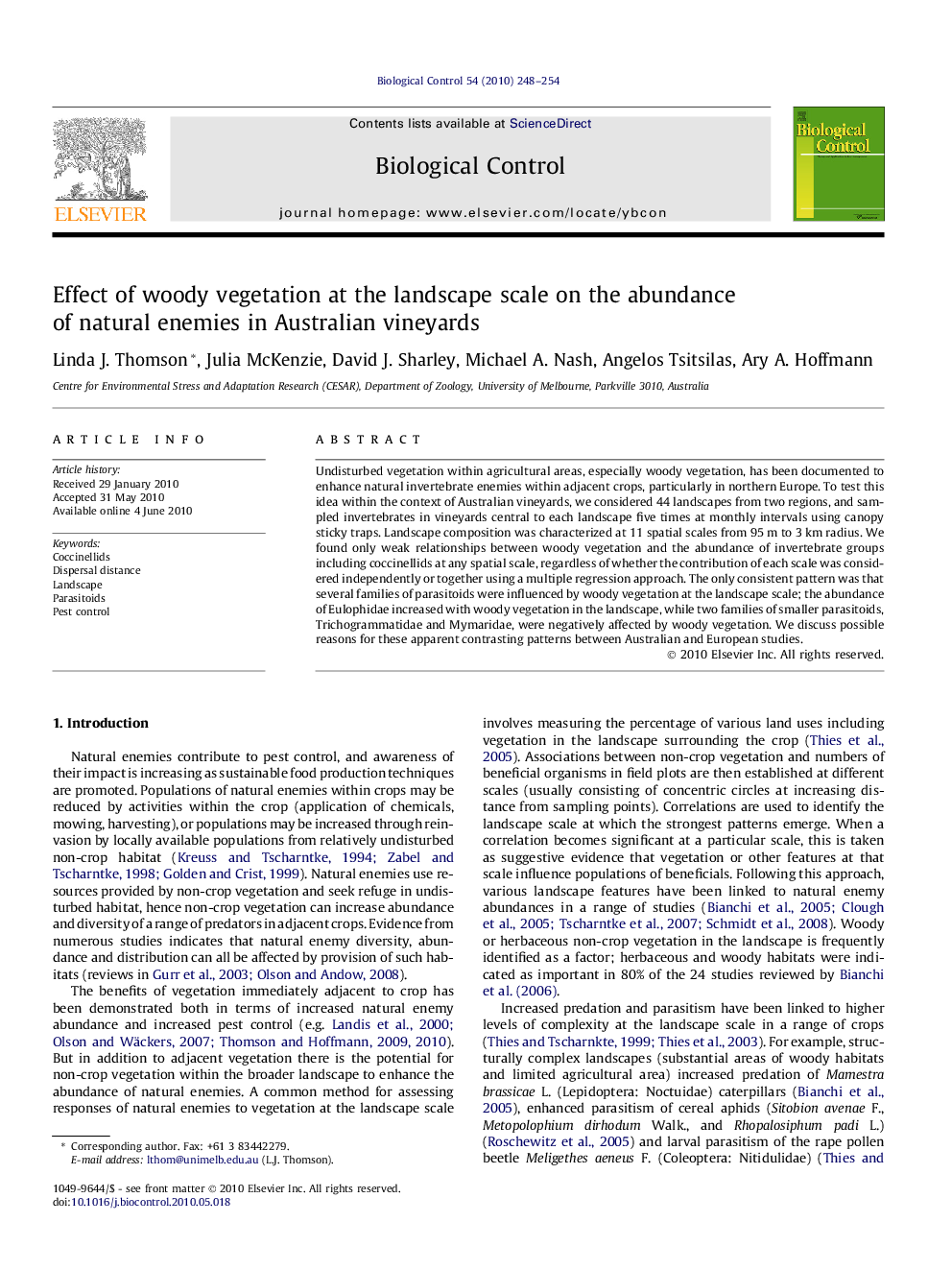| Article ID | Journal | Published Year | Pages | File Type |
|---|---|---|---|---|
| 4504313 | Biological Control | 2010 | 7 Pages |
Undisturbed vegetation within agricultural areas, especially woody vegetation, has been documented to enhance natural invertebrate enemies within adjacent crops, particularly in northern Europe. To test this idea within the context of Australian vineyards, we considered 44 landscapes from two regions, and sampled invertebrates in vineyards central to each landscape five times at monthly intervals using canopy sticky traps. Landscape composition was characterized at 11 spatial scales from 95 m to 3 km radius. We found only weak relationships between woody vegetation and the abundance of invertebrate groups including coccinellids at any spatial scale, regardless of whether the contribution of each scale was considered independently or together using a multiple regression approach. The only consistent pattern was that several families of parasitoids were influenced by woody vegetation at the landscape scale; the abundance of Eulophidae increased with woody vegetation in the landscape, while two families of smaller parasitoids, Trichogrammatidae and Mymaridae, were negatively affected by woody vegetation. We discuss possible reasons for these apparent contrasting patterns between Australian and European studies.
